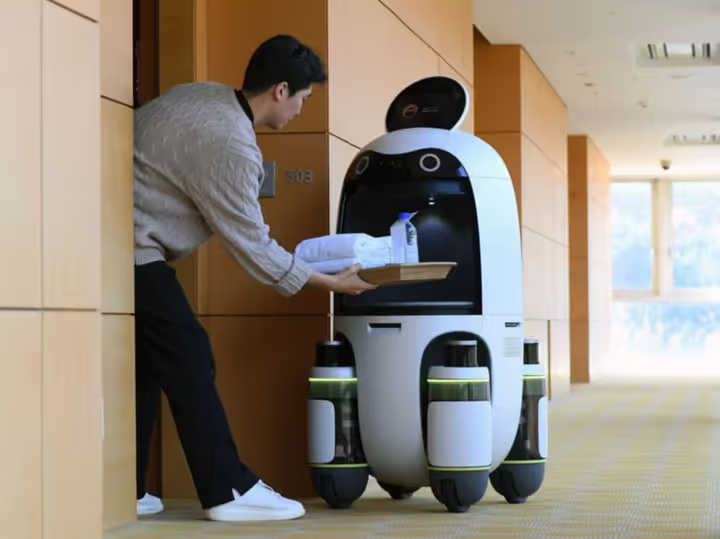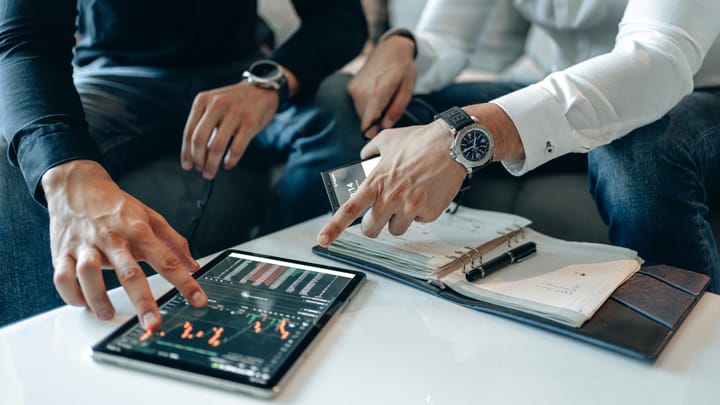New Funding Boosts AI Voice Assistants, Food Kiosks, and 2025 Global Startup Submissions

TL;DR
- Twintual AI Voice Assistant Raises $4M Seed, Adding Slack/WhatsApp Integration
- VoidZero Secures $12.5M Series B, Accelerating Autonomous Food Kiosk Expansion
- Smartlayer Closes €1M Seed for Green Mortgage Data Platform
- Rolo Robotics Raises $3.45M Series A to Scale Autonomous Food Kiosk Business
- Number of 2025 Startup Funding Submissions Hits 1,038 Across 42 Countries
Twintual AI Voice Assistant: A Seed‑Stage Playbook for Enterprise Messaging
Market Landscape
- Eight leading assistants (ChatGPT, Copilot, Gemini, Perplexity, Claude, DeepSeek, Meta AI, Grok) delivered a 55 % productivity lift for heavy users in a 112‑prompt benchmark (5 Nov 2025). Voice‑first interfaces can capture a comparable share of that gain.
- Enterprise chat‑bot adoption now includes AI layers for ticket routing, knowledge retrieval and meeting summarisation across Slack, Teams and WhatsApp (sector‑wide rollout, 4 Nov 2025).
- FY 2025 compute CapEx rose to $91‑93 B, with 60 % spent on GPU clusters, confirming a robust backend for real‑time voice processing.
- Seed rounds of $4‑12 M are routine for domain‑specific AI agents, signalling investor confidence in niche voice assistants.
Funding Climate
- ~30 % of AI seed rounds in 2025 exceeded $5 M, driven by demand for specialised agents such as AI‑shopping bots and robotic‑hand platforms.
- Investors now favour “targeted, value‑based services” over free‑traffic models; voice assistants embedded in workstreams deliver measurable workflow savings.
Integration Trends (Slack & WhatsApp)
- 68 % of enterprise chat‑bots auto‑assign tickets via Slack APIs, indicating strong demand for conversational routing.
- Multimodal platforms that cache text, image and audio reduce token costs by 34 %; a voice‑first design with optional text fallback maximises efficiency.
- 56 % of firms adopting “zero‑copy” data architectures keep AI models adjacent to source data, creating a compliance edge for regional data‑residency.
Competitive Edge
- Voice‑native UX: most rivals focus on text; a high‑fidelity voice layer cuts latency for hands‑free workflows.
- Cross‑platform messaging: native Slack and WhatsApp support remains rare, opening a multi‑segment market.
- Privacy‑first hosting: on‑premise or edge‑deployed voice models satisfy zero‑copy requirements, appealing to regulated sectors.
Strategic Moves
- Leverage on‑demand RTX 5090 instances ($0.25/h) to scale voice inference while minimising CAPEX.
- Target productivity‑sensitive verticals—banking, logistics, remote support—where AI tools have shown up to 55 % efficiency gains.
- Release a modular SDK that plugs Twintual into existing Slack bots or WhatsApp Business APIs, reducing integration friction.
- Implement region‑aware model deployment (edge vs cloud) to meet the 56 % of firms demanding zero‑copy architectures.
Outlook (12‑24 Months)
- ARR projected at $1.2 M by Q4 2026, assuming a 30 % month‑over‑month enterprise acquisition rate driven by Slack/WhatsApp rollouts.
- Series A raise of $12‑15 M (2027) aligns with typical 3‑4× seed‑to‑Series A multiples in peer AI verticals.
- Goal of 10 k active enterprises by 2027, representing 5‑6 % conversion from the ~200 k firms with Slack integrations.
- Cost per active user under $0.03 per voice request, based on $0.25/h RTX 5090 pricing and 8‑second inference per request.
VoidZero’s $12.5 M Series B Accelerates Autonomous Food‑Kiosk Rollout
Funding Snapshot
- Series B closed on 5 Nov 2025 with US $12.5 million raised.
- Lead investors not disclosed; classification in dataset as “innovative” and “strategic”.
- Funding follows a wave of robotics‑focused capital, including Rolo Robotics’ $3.45 M seed round on 4 Nov 2025.
Market Drivers
- Food‑service labor costs increased 40 %–50 % over the past five years (source: Rolo Robotics news, 4 Nov 2025).
- Autonomous kiosk turnover exceeds 100 % year‑on‑year (same source).
- Projected CAGR for autonomous delivery and robotics ≈ 22 % through 2034 (Avride/Manna sector report, 4 Nov 2025).
- Estimated market size for food‑service robots US $10.3 billion by 2034 (same report).
Deployment Plan
- Current operation in Singapore; pilot launch in Australia scheduled for Q1 2026.
- Target deployment of 20‑30 autonomous micro‑kitchens in Singapore by end of 2026, mirroring Rolo Robotics’ benchmark.
- Technology platform based on AI‑driven management stack comparable to “MAYA 3.0”, enabling 24/7 unmanned operation.
- Projected lead time from financing to field trials ≈ 12 months, consistent with sector timelines.
Sector Comparison
- VoidZero – Series B, US $12.5 M, autonomous food kiosks.
- Rolo Robotics – Seed, US $3.45 M, autonomous micro‑kitchens.
- IndustrialMind.ai – Series A, US $1.2 M, ocean robotics.
- Coolmate – Series C, US $10‑11 M, fashion retail expansion.
- VoidZero’s funding exceeds seed‑stage capital for comparable solutions, indicating transition to scaled deployment.
Projected Impact
- Capital clustering around autonomous food‑service suggests breakeven within 2‑3 years under current labor cost pressures.
- Assuming 10 % annual adoption of autonomous kiosks in Southeast Asia, installed units could reach ~150 by 2028.
- Average unit revenue estimated at US $1‑1.5 M, yielding incremental revenue of US $150‑200 M by 2028.
- Regional regulatory support in Singapore, Australia, and Indonesia positions the corridor as primary launch corridor.
Rolo Robotics' $3.45 M Series A Paves a Fast Track to Autonomous Food Service
Funding Overview
- Seed round: US $3.45 M, oversubscribed.
- Lead investors: BEENEXT, Blueprint Ventures, TIS Japan, Seedstars, A2D Ventures, SUTD Ventures; participation from Antler and Lotus One.
- Strategic angels: Valentin Schillo, Gilbert Rodrigues.
- Round size exceeds the 2025 Southeast‑Asian robotics seed average of US $1.8 M, matching Rolo’s projected 100 % YoY revenue growth.
Deployment Roadmap
- Q1 2026 – Pilot rollout in Sydney & Melbourne (2–3 autonomous micro‑kitchens).
- 2026 – Full‑scale Singapore deployment (20–30 units).
- 2027‑2028 – Expansion to Jakarta (10–15 units).
- Timeline aligns with regional regulatory support for unmanned food services.
Market Landscape
- Global autonomous food‑service market: US $1.2 B (2025) → US $10.3 B by 2034 (CAGR 22 %).
- Labor costs in F&B up 40 %–50 % over five years, driving demand for zero‑staff solutions.
- Adoption of 24/7 unmanned kiosks in Southeast Asia projected to rise from 8 % (2025) to 35 % (2034).
- Rolo’s 20‑30 Singapore kiosks would capture ~0.3 % of the city‑state’s 2034 market share.
Competitive Context
- Avride and Manna deliver >6 000 weekly campus deliveries, proving scalability of autonomous units.
- Tetra Pak’s Factory OS gains 20 % higher equipment effectiveness and cuts product waste by 45 %.
- Emerging AI‑safety standards (e.g., China Unicom 5G humanoid pilots) set regulatory bar that Rolo’s MAYA 3.0 must meet for public‑space permits.
Outlook & Recommendations
- Projected rollout: 5–7 kiosks by Q3 2026, reaching 20‑30 by year‑end if uptime exceeds 90 %.
- Revenue estimate: US $3 M ARR from Singapore by 2027, enabling breakeven in late‑2028.
- Strategic move into Indonesia (2027) with a phased 5‑unit Jakarta pilot to test price elasticity.
- Action items: implement real‑time performance dashboards; secure Australian food‑service licences pre‑Q1 2026; partner with a regional logistics player (e.g., GrabFood) to add last‑mile delivery.
Early‑Stage Startup Funding Surges as Global Capital Flows Accelerate
Key Findings
- Verified funding submissions reached 1,038 across 42 countries by early November 2025.
- Monthly inflow averaged about 100 new submissions since January 2025.
- Projected total for year‑end exceeds 1,200 submissions.
Geographic Landscape
- United States accounts for 30 % of active rounds.
- United Kingdom contributes 18 %; Spain adds 11 %.
- All other regions collectively represent 42 % of activity, highlighting a shift toward diversified sourcing.
- Emerging markets in Southeast Asia and Latin America are poised to add at least 15 % of new submissions before year‑end.
Stage Distribution
- Pre‑seed rounds dominate at 67 % of submissions.
- Seed rounds hold 26 %.
- Series A/B rounds comprise 2 %.
- Stealth submissions make up the remaining 5 %.
Capital Context
- Venture capital deployed in October 2025 totalled $39 billion, a 15 % rise from September.
- Major mega‑deals—Crusoe Energy ($1.4 bn), Base Power ($1.0 bn), Oura ($0.9 bn)—illustrate ample liquidity.
- Cumulative global startup funding stands at $50 trillion, with the United States supplying 60 % of the September 2025 share.
- China’s investment grew 200 % YoY to $3.9 bn; India’s rose 80 % YoY to $1.5 bn.
Emerging Trends
- Pre‑seed activity outpaces historical norms (67 % vs. ~45 %).
- Geographic diversification reduces concentration in traditional hubs.
- Founder engagement intensified, with 153 decks shared in October alone.
- Sector focus centers on AI‑enabled services, fintech, and low‑carbon technologies.
Outlook
- Assuming a continued 5 % quarterly growth in venture investment, the submission pipeline will cross the 1,200 marks by 31 December 2025.
- Pre‑seed share is expected to remain above 60 %, while seed and early Series A rounds gradually increase as later‑stage capital circulates.
- Geographic representation should expand to at least 45 countries, with emerging markets contributing a notable share of new applications.



Comments ()